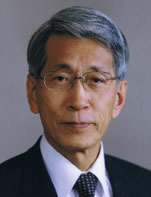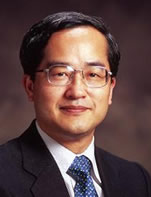2010 Recipients of C&C Prize
Group A

Dr. Hiroyuki Sakaki President, Toyota Technological Institute |

Dr. Yasuhiko Arakawa Director of Institute for Nano Quantum Information Electronics |
Citation
For Pioneering and Leading Contributions to the Research, Development, and Progress of Quantum Wire and Quantum Dot Semiconductor Devices
Achievement
Dr. Hiroyuki Sakaki and Dr. Yasuhiko Arakawa presented a pioneering theoretical proposal on applying microstructures (namely, quantum wires and quantum dots) to semiconductor devices such as field-effect transistors (FETs) and semiconductor lasers, which dramatically improved device performance and characteristics. The doctors' proposal resulted in quantum wire FETs and quantum dot semiconductor lasers due to the progress of successive nano-processing technologies. In particular, devices at the practical level were commercialized as quantum dot lasers, and they are expected to enjoy significant growth. Moreover, their research on quantum wires and quantum dots developed into elements having new functions and higher performance by controlling a single-electron or a single-photon.
Dr. Hiroyuki Sakaki proposed a new element concept for controlling quantum-electron movement in an electronic layer by focusing on the two-dimensional movements of the electrons in the conduction layer of metal-oxide semiconductor FETs (MOSFETs). This control was achieved with the introduction of a microstructure barrier such as a line or mesh at intervals of about ten nanometers. As a result, he proposed a negative-resistance function element in 1975 and quantum wire FET in 1980. The quantum wire FET was a pioneering one that preceded the FETs that utilize a one-dimensional electron, such as carbon nanotubes. Moreover, in the middle of the 1990s, a heterostructure FET with a quantum dot was attained, and the possible applications to memory devices and photodetectors were presented. This research led to the single-electron transistor by controlling single-electron conduction, which is utilized in the fields of measurement, quantum information processing, etc., as well as for nano-size wire FETs, which are used for next-generation LSIs, sensors, and more.
Dr. Yasuhiko Arakawa elaborated on the conventional quantum thin-film structure in cooperation with Dr. Sakaki in 1982, presented the concept of the quantum dot that confines the electron three-dimensionally in the semiconductor, and proposed the world's first quantum dot laser as an application in the photonics field. A lot of the pioneering forecasts Dr. Arakawa made about the characteristics of the quantum dot laser were proven one after another in 1990 or later due to the progress of nano-fabrication processing technologies and device-demonstration capabilities.
Subsequently, quantum dot lasers with a low lasing threshold, no temperature dependence, and high-speed direct modulation exceeding 10 Gbps were developed. They have already been commercialized in cooperation with the industrial world. In addition, great strides have been made in research and development on high-power, low-noise semiconductor optical amplifiers and single-photon quantum devices. Moreover, applied research on quantum cryptography that makes the best use of these amplifiers and devices is experiencing progress now. Additionally, the development of the quantum dot for solar batteries is anticipated with great expectations.
Consequently, the NEC C&C Foundation highly praises Drs. Hiroyuki Sakaki and Yasuhiko Arakawa for their contributions to the progress of quantum wire and quantum dot semiconductor devices that have paved the way for new devices for telecommunications and are expected to be applied in many other fields.
